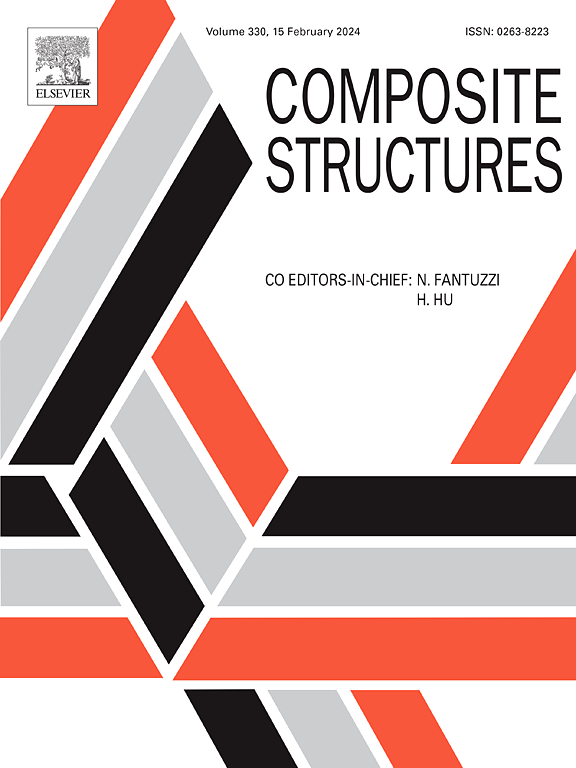Enhancing shear strength of adhesive joint of high modulus CFRP with UV picosecond laser texturing technique
IF 6.3
2区 材料科学
Q1 MATERIALS SCIENCE, COMPOSITES
引用次数: 0
Abstract
High modulus carbon fiber reinforced polymer (HM-CFRP) is widely employed in the aerospace industry due to its high strength and lightweight characteristics. However, enhancing the bonding strength of adhesive joints remains a challenge. To improve the adhesive strength of HM-CFRP, the present study introduced a UV picosecond laser ring-texturing technique and investigated its effectiveness and the underlying mechanisms of strength enhancement. The maximum shear strength was obtained at a laser power of 1.9 W, as the carbon fibers of the HM-CFRP could be exposed and maintained their integrity. An increase in hydrophilic functional groups on the HM-CFRP surface after laser treatment was observed by FTIR technique. By using appropriate geometric parameters of the ablation area, the surface hydrophilicity and the adhesive strength of HM-CFRP were improved. The difference in bonding strength between different textures was investigated. The result shows that the bonding strength of the circle-ring texture improved by 64 % (18.24 MPa to 29.91 MPa) improvement compared with the untreated ones. By analyzing the failure interfaces and performing a simulation analysis, the ring-texturing mechanism improved the boding strength by impeding crack propagation and reducing the peeling force
UV皮秒激光变形技术提高高模量CFRP粘接接头抗剪强度
高模量碳纤维增强聚合物(HM-CFRP)以其高强度、轻量化的特点在航空航天工业中得到了广泛的应用。然而,如何提高粘接接头的粘接强度仍然是一个难题。为了提高HM-CFRP的粘接强度,本研究引入了一种紫外皮秒激光环织构技术,并对其有效性和增强强度的机制进行了研究。当激光功率为1.9 W时,HM-CFRP材料的抗剪强度最大,其碳纤维可以被暴露并保持完整。FTIR技术观察到激光处理后HM-CFRP表面亲水性官能团增加。通过选择合适的烧蚀区域几何参数,提高了HM-CFRP的表面亲水性和粘接强度。研究了不同织构间结合强度的差异。结果表明,与未经处理的织构相比,圆环织构的结合强度提高了64 %(18.24 MPa ~ 29.91 MPa)。通过对失效界面的分析和仿真分析,圆环织构机制通过阻碍裂纹扩展和减小剥离力提高了粘结强度
本文章由计算机程序翻译,如有差异,请以英文原文为准。
求助全文
约1分钟内获得全文
求助全文
来源期刊

Composite Structures
工程技术-材料科学:复合
CiteScore
12.00
自引率
12.70%
发文量
1246
审稿时长
78 days
期刊介绍:
The past few decades have seen outstanding advances in the use of composite materials in structural applications. There can be little doubt that, within engineering circles, composites have revolutionised traditional design concepts and made possible an unparalleled range of new and exciting possibilities as viable materials for construction. Composite Structures, an International Journal, disseminates knowledge between users, manufacturers, designers and researchers involved in structures or structural components manufactured using composite materials.
The journal publishes papers which contribute to knowledge in the use of composite materials in engineering structures. Papers deal with design, research and development studies, experimental investigations, theoretical analysis and fabrication techniques relevant to the application of composites in load-bearing components for assemblies, ranging from individual components such as plates and shells to complete composite structures.
 求助内容:
求助内容: 应助结果提醒方式:
应助结果提醒方式:


